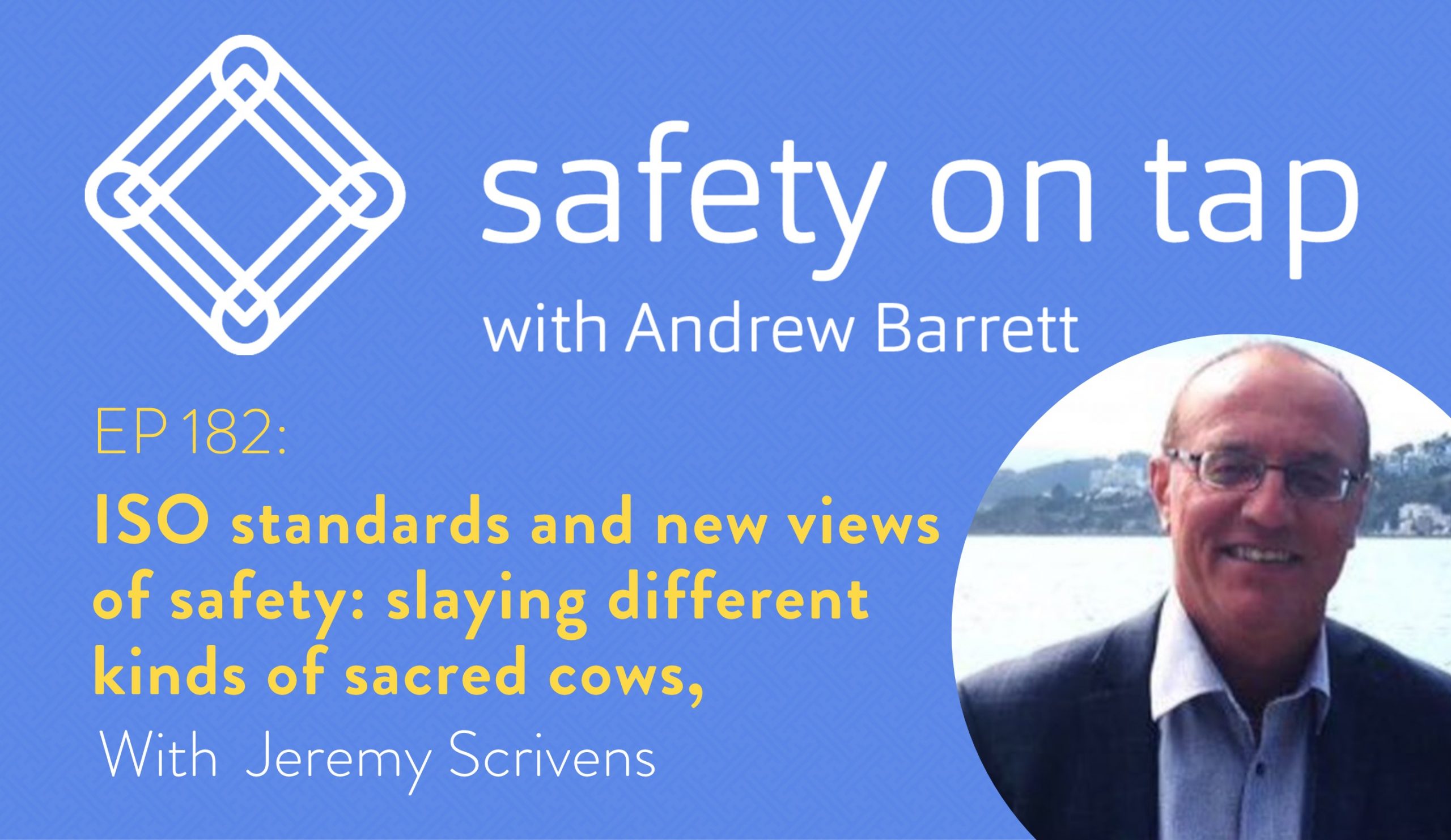What’s the risk when we use an ISO standard approach to health and safety? That we miss the point entirely. Decades of experience have revealed what happens when standards compliance and its activities become the goal, instead of the goals of actual health and actual safety the ISO standard was meant to enable. Oh, and by the way, we’re going to blow the idea of new views of safety out of the water too.
Hey, it’s Andrew, and this is Safety on Tap.
Since you’re listening in, you must be a leader wanting to grow yourself and drastically improve health and safety along the way. Welcome to you, you’re in the right place. If this is your first time listening in, thanks for joining us, and well done for trying something different to improve! And of course, welcome back to all of you wonderful regular listeners.
This podcast is free for you, but not cheap to make! Here’s a message from our sponsor who makes it happen:
You’ve probably heard me talk about learning teams, and might be wondering what’s that all about. Learning teams are an increasingly popular practical activity to help your organisation to learn better, in order to improve performance.
It’s not an investigation, it’s not a risk assessment, and it’s not a committee meeting – but a learning team approach can help to learn from the past, to anticipate the future, and to engage effectively with people all over your organisation or supply chain.
There’s not one way to do learning teams but some critical principles which will enable you to facilitate better learning whatever your situation.
I’ve created a few short videos which explain What is a learning team? If you’re interested visit safetyontap.com/what
Today’s partner in conversation Jeremy Scrivens sort of defies description, and definitely defies categorisation. Jeremy helps leaders and organisations enable the future of work – which he labels being an Appreciative Futurist. In the way I’m described as a reformed health and safety professional, Jeremy might be a reformed HR professional. But soooo much more.
Let’s get into it, here’s Jeremy Scrivens:
Jeremy is up for a conversation so do connect with him on Linkedin, that’s Jeremy Scrivens, and tell him you heard our conversation on the podcast!
So many things to take away, I had a hard time coming up with my few. Why not write down your own takeaways? That’s a clever learning hack to help you get even more value from your podcast listening time.
Here’s my three takeaways from that chat with Jeremy Scrivens:
Takeaway #1: Think very carefully about how an ISO standard works in your organisation. Think very carefully about whether it has become an end unto itself, or whether it’s actually delivering positive outcomes. Don’t be afraid to adjust, or chuck it out if it’s not.
Takeaway #2: Did some of these ideas and concepts sound familiar? Treating people as part of the solution? Focussing on things going well not just going wrong? That continuous learning in the flow of work is useful? That the system of work shapes behaviour? None of these concepts, loosely under the umbrella of new view’, are either new or unique to safety. If you bristle at the term, if you think it’s divisive, as I do, then it’s time to chuck it out and instead talk about the core idea: what if we were more appreciative and inquisitive about the strengths in our people and organisation? What are systems thinking informed our priorities and analysis? It might be a new view, but let’s stop using the language of The New View.
Takeaway #3: What underpins much of what Jeremy said is changing the narrative, changing the story that flows in our organisation about people, about health and safety, and leaders, about the purpose of an organisation. What are you doing in your organisation to actively listen, and then shape and change these narratives? Every conversation, every email, every meeting, and every report is an opportunity to do that.
Don’t go yet, I want to join the dots for you with a few other podcast episodes you might like which will link up with this one.
Ep75 with Mykel Dixon explores the role of creativity at work, something we should all embrace more.
Ep157 with Amanda Clements explored how she, as an H&S leader, uses Appreciative Inquiry approaches to be more effective inside and outside her work.
Ep40 with Cat Mattice introduced the idea that a great workplace is not absent of bullying but present with civility.
Ep176 with Diane Chadwick-Jones explored how human performance was the approach and language used in a massive global oil and gas company.
And finally, Ep 123, with yours truly, asks and answers the question, how much humanness should there be at work?
Thanks so much for listening. Until next time, what’s the one thing you’ll do to take positive, effective or rewarding action, to grow yourself, and drastically improve health and safety along the way? Seeya!
Here’s your FREE reflection worksheet from this episode.
And here’s your FREE download of the full transcript of this episode.
Feel free to share this with your team/colleagues!

